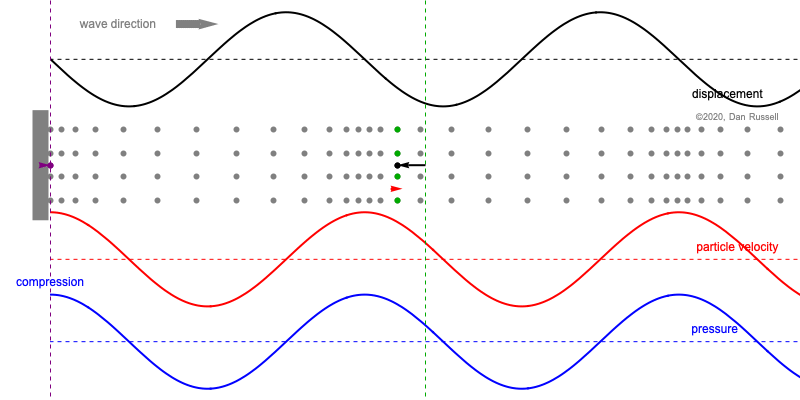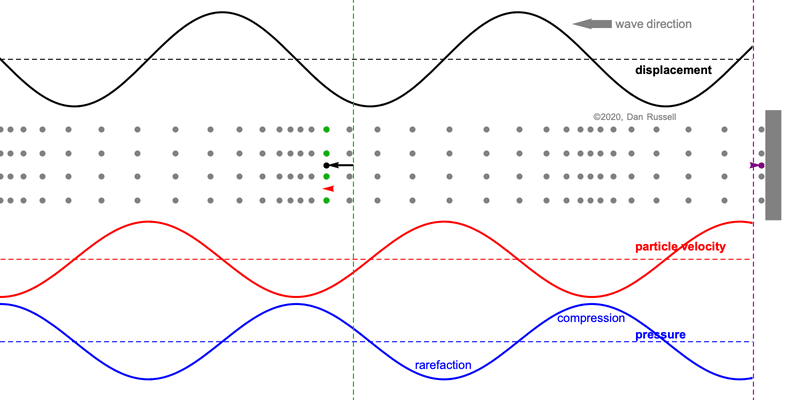When discussing the behavior of longitudinal plane waves (i.e., sound waves air), the following statements are often made regarding the relative phase between the pressure and the fluid particle velocity[1]
- pressure and particle velocity are in-phase for a forward traveling (right going) wave,
- but pressure and particle velocity have opposite phase for a backward traveling (left going) wave.
Mathematically this is observed the presence of a negative sign for the left going part of the wave expression. But conceptually, this can be a bit tricky to understand, especially because we tend to draw plots of displacement, velocity using the vertical axis to indicate positive values for a wave which involves longitudinal (horizontal) motion.
If we start with an expression for pressure for a sinusoidal wave traveling in the positive \(x\)-direction, $$ p(x,t) = A e^{j(\omega t - k x)} \qquad \hbox{real part} \longrightarrow p(x,t) = A \cos(\omega t - k x) , $$ the particle velocity associated with this pressure is obtained through the conservation of momentum (Euler's equation) $$ \rho\frac{\partial u}{\partial t} = - \frac{\partial p}{\partial x} \quad \longrightarrow \quad u = - \frac{1}{\rho} \int \frac{\partial p}{\partial x}\, dt $$ so that the particle velocity for this sinusoidal wave traveling the positive \(x\)-direction is $$ u(x,t) = \frac{1}{\rho c} A e^{j(\omega t-kx)} \qquad \hbox{real part} \longrightarrow u(x,t) = \frac{1}{\rho c}A \cos(\omega t - k x) , $$ where I've made use of the fact that the wave speed \(c=\omega/k\). Comparing the expressions for particle velocity and pressure, we see that they are exactly the same except that velocity amplitude is smaller by a factor of \(\rho c\), a quantity which is called the "characteristic impedance" of the medium through which the wave is traveling.
Now let's consider a pressure wave traveling in the negative \(x\)-direction, $$ p(x,t) = B e^{j(\omega t + k x)} \qquad \hbox{real part} \longrightarrow p(x,t) = B \cos(\omega t + k x) . $$ As above, the particle velocity associated with this pressure is obtained through the conservation of momentum, so that the particle velocity for this sinusoidal wave traveling the negative \(x\)-direction is $$ u(x,t) = -\frac{1}{\rho c} B e^{j(\omega t + k x)} \qquad \hbox{real part} \longrightarrow u(x,t) = - \frac{1}{\rho c}B \cos(\omega t + k x) , $$ Comparing these expressions for particle velocity and pressure, we see that now the velocity amplitude is negative indicating a 180o phase relationship between velocity and pressure.


